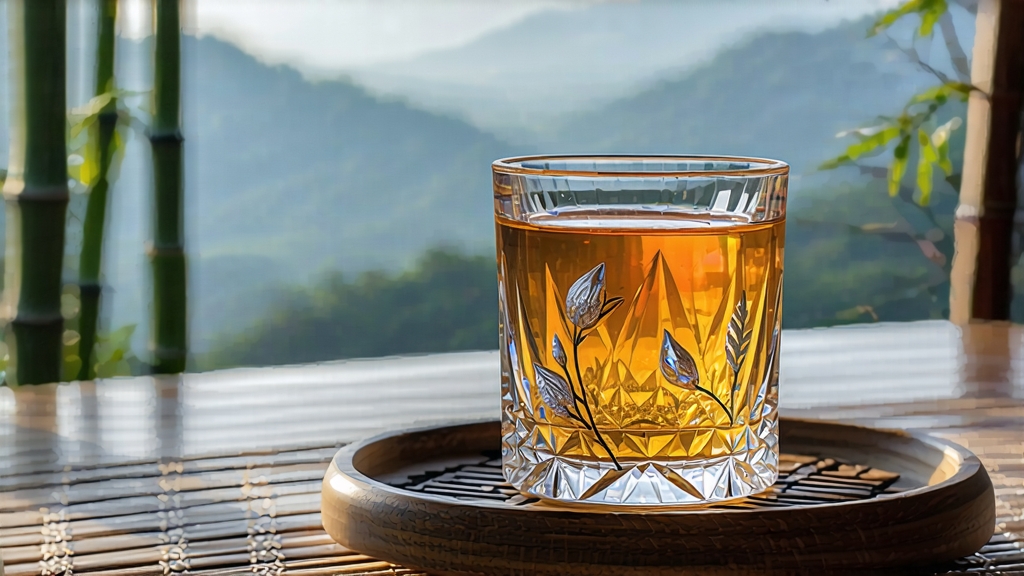
If green tea is the youthful scholar of Chinese tea culture and pu-erh the venerable sage, then Bai Hao Yin Zhen—literally “White Hair Silver Needle”—is the moonlit poet who arrives quietly, recites one luminous stanza, and vanishes before the listener remembers to breathe. Revered as the apex of white tea, this delicate assembly of down-covered buds carries within its pale silk the cool air of pre-dawn March, the mineral breath of Fujian’s red-clay hills, and a history that flickers like lantern light across nine centuries.
Origin stories differ: some say the earliest “white” tribute cakes entered the Song court in 1082, others insist the technique of air-drying buds without heat was a guarded secret of the Taimu Mountain nuns during the Ming. What is certain is that by 1796 the county of Fuding, blessed by a terroir where the East China Sea’s fog meets subtropical sun, began crafting loose silver needles for export along the Maritime Silk Road. European portrait painters later steeped the buds to keep their pigments moist; unknowingly they were steeping antioxidants centuries before the word existed.
Botanically, only two cultivars are invited into the needle’s exclusive club: Fuding Da Bai and Zhenghe Da Bai. The former yields a slimmer, more aromatic bud; the latter a plumper, slightly maltier sweetness. Gardens sit between 200–600 m on weathered granite soils rich in quartz; the mist that lingers until ten each morning acts as a natural shade cloth, slowing photosynthesis and concentrating amino acids. Farmers speak of “three whites and one green”—the bud, the first two leaves, and the stem must be cloaked in pearl fuzz when picked, a signal that the internal moisture gradient will allow a flawless wither.
Plucking occurs for only ten mornings each year, beginning when the thermometer touches 18 °C and ending before the Qingming festival. Workers wear cotton gloves to avoid bruising the epidermis, collecting buds into shallow bamboo trays never more than 2 cm deep so that pressure does not ignite oxidation. A master plucker can gather 600 g per hour; 30 000 buds are required for a single kilogram of finished tea, the agricultural equivalent of hand-writing a manuscript one character at a time.
The craft is disarmingly simple on paper, mercilessly difficult in practice: wither, sort, bake, finish. First the buds are spread on bamboo racks in a drafty loft whose windows face north; for 48–60 hours they surrender 70 % of their moisture while enzymes nibble at chlorophyll, turning the leaf jade-silver and birthing a hay-and-almond bouquet. Every ninety minutes the tea maker lifts a tray to his cheek, testing for the coolness that signals even evaporation; if the bud feels clammy he adjusts the louvered window a finger’s width, an intuition earned only after ten seasons. Next comes “qing bing,” a five-minute encounter with 45 °C charcoal ash that halts oxidation without waking the sleeping fragrance. Finally the needles rest for three weeks so residual moisture migrates from stem to tip, after which a 60 °C “foot-fire” locks in stability. The result is a tea that is 1.2 % moisture by weight—so dry it sings against porcelain.
Western vendors often market Bai Hao Yin Zhen as “caffeine-free white,” a myth that collapses under chemical analysis. Buds are young, ergo rich in methylxanthines; a two-gram serving can deliver 20–25 mg of caffeine, roughly half that of a sencha but triple that of a large cappuccino if you grandpa-style an entire pot. What modulates the stimulant is the tea’s high GABA and L-theanine content, creating a buoyant, lucid calm rather than a jagged spike.
To coax the moonlight into your own cup, begin with water you would happily give a newborn: low in TDS, free of chlorine, ideally passed through bamboo charcoal. Heat to 80 °C—just when the kettle forms pin-sized bubbles dubbed “crab eyes.” Use 3 g of needles per 120 ml vessel; glass gaiwan allows you to watch the choreography, but a thin porcelain cup preserves heat. Awaken the buds with a 5-second rinse, then infuse 20, 25, 35, 50, 80 seconds, extending by half again each round. The